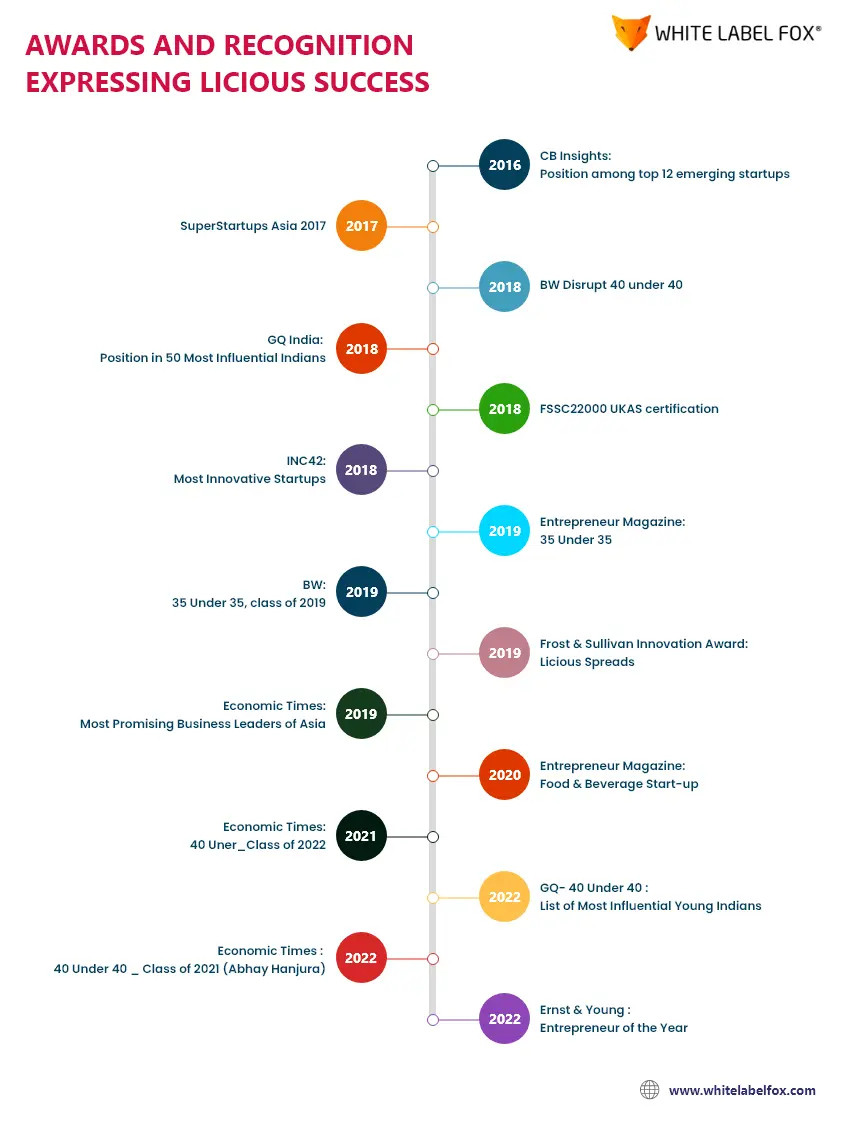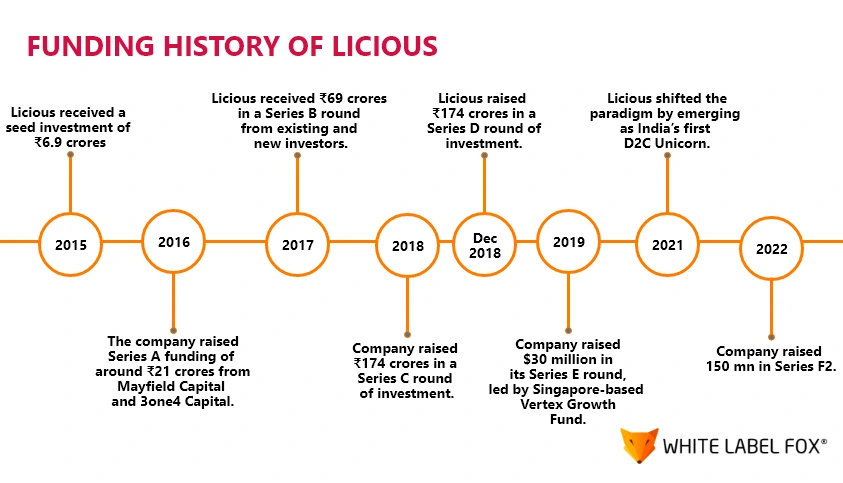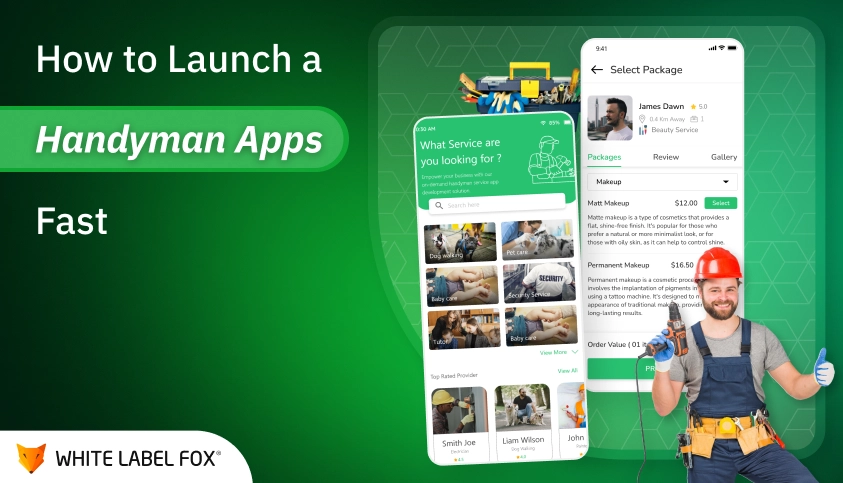Nothing is more convenient than having fresh meat delivered to your door, isn’t it? An online meal ordering and delivery app like Licious have made the process easier. Now you don’t have to move to physical stores, as you are allowed to locate the cuts of meat you want with a few simple clicks on a mobile app. Whether you want chicken, steaks, or seafood, you can get it delivered to your doors with Licious.
The mobile app similar to Licious has made it easier for its users to purchase the best quality meats without leaving home. Meat delivery to the doorsteps is not a new norm but has gained massive popularity in recent times, making many jump into the market. Are you also looking to launch your meat delivery business online? If yes, then have a quick insight into Licious’s business model, it’s working, and its money-making strategy right here.
What is Licious?
India’s first D2C Unicorn, Licious headquartered in Bengaluru, Karnataka. The meat ordering and delivery company operates on a farm-to-fork model, owning the entire cold and back-end supply chain.
Licious operates in approximately 25 Indian cities, including Hyderabad, Faridabad, Bengaluru, Delhi, Faridabad, Noida, Mumbai, Pune, Gurugram, Chennai, Coimbatore, Kochi, Chandigarh, Jaipur, Kolkata, Visakhapatnam, Vijayawada, and Pondicherry.
Licious Success Story to Dive Into!
Owned by Delightful Gourmet Pvt Ltd, Licious was founded by Vivek Gupta and Abhay Hanjura in 2015. The company has more than five processing centers. It has been recognized with the FSSC22000 UKAS certification for meal safety. It’s the first company to have pledged in the sector towards ESG compliance.
The company has developed a task force that has actively worked to grab the targeted goals. In 2021, Licious partnered with the World Animal Protection India organization to sign up for the ‘Commitment to Chicken Welfare.’ The meat delivery company is the first Indian brand to make the pledge. Later in the same year, the company achieved the Thought Leadership Award for ESG Goals.
Recently, in 2022, Licious launched its EBO in Bangalore. The EBO is an offline seafood and offline meats store that provides an experience like no other. The store also has Licious Kitchen, a space that enables consumers to experience the Licious RTC range, cooked & served.
Are You Planning To Develop A Meat Delivery App Like Licious ?
Learn More About Our Readymade Delivery Script.

Funding History, Awards, and Recognition of Licious
Bengaluru-based seafood and meat brand Licious serves fresh, clean, and best chicken, fish, eggs, and meats online. The Licious business model is based on farm-to-form, which has helped the company to win many awards and get recognition in the market. Explore the below image to know what the company has gained in the market.

A farm-to-fork Licious business model has also attracted many investors to fund their idea. Want to have insight into the Licious funding history, then have a look at the below image.

Vivek Gupta, the founder of Licious, remarked that we have to build Licious by putting life in the dead chicken. They have understood what they want to achieve through this platform to deliver an unparalleled experience to their customers.
The company always tries to introduce quality standards and benchmarks to set up a hitherto non-existing infrastructure and develop processes that Indians were yet to experience. The company offers a recipe section in its app and website that helps customers to cook delicious dishes in the exotic chef style. Have a quick look at the video to learn how:
Watch this video for more info.
Taking up this idea of changing the approach, meat is procured, processed, and sold. The company’s primary motto is simple; we won’t sell what we won’t eat. Getting inspired by the Licious business model and working strategy, many are choosing to deploy an online food ordering app that helps them to sell fresh meat, seafood, and more without hassle.
Licious Business Model: How the On-demand Meat Deliver Platform Works?
In 2021, the global meat sector was valued at 897 billion U.S. dollars. The market was forecast to grow to 1354 billion U.S. dollars by 2027. The market is expected to grow at 4% by 2026. Meat ordering and delivery to the doorstep is in a new swing, and all thanks go to the pandemic spread, which necessitated delivery for almost anything under the sky.
Customers changing behavior has increased the opportunities for the on-demand delivery industry. This has increased the importance of delivery anything app development as more and more entrepreneurs are seeking to automate their business operations with digital solutions.
Licious, a meat ordering and delivery platform, satisfy the need for qualitative meat of customers efficiently. The company ensures to deliver fresh and high-quality meat to consumers. Check how Licious benefits delivery providers, customers, and farmers.
Customers
- Customers who want fresh meat delivered to their doors can use the app similar to Licious to get it right away
- Consumers don’t have to travel to meat shops to get their needs satisfied
- Licious ensures fresh meat delivery
Delivery Providers
- Freelancers who want to make extra money
- Delivery providers can accept more requests to satisfy customers’ needs
- Licious makes everything easier for delivery providers and enables them to earn more
Licious for Vendors or Farmers
- Licious enables farms or vendors to sell their products by registering their business
- Helps vendors to expand their business reach and customer base
- The delivery platform enables vendors to make a huge profit
Licious achieved more than 90% repeat customers using D2C as a direct marketing channel. It accounts for 85% of its sales from customers’ orders. Have a look at the D2C operations to know how the traditional meat supply chain worked before D2C days; explore the flow here:
Farmers → Middleperson → Wholesalers → Butchers → Retailers
However, in the D2C space where meat delivery platform Licious and a few other startups are operating, this supply chain involves the following flow:
Farmers → Butchers → Startups
A farm-to-fork Licious business model helps the company to have around a 30 to 40% of profit margin. It has got a customer base of around 700. In 2015, Licious collected 1.47 crores revenue, which increased to 180 Crores between 2019 and 2020. Licious completed more than 100 orders per day in 2015, while it increased to 20,000 in 2021. The company claims that an average consumer buys Licious products two-three times a month. They spend close to 22,000 on a monthly basis.
How Licious Works?
Now you might have insight into a Licious business model; next, it’s time to know how Licious works to satisfy growing market demand. Check the step-by-step process here.
- Users can download an app from the Android or Apple app store; they can even visit the website
- User can then enter their delivery location and browse different categories to place the order
- They can also track their order right through their smart devices
- Customers will get the notification once the delivery provider is near the customers’ location
- The delivery provider delivers the meat to the customers’ location
- Users make payments and provide feedback.
Ordering meat, mutton, and seafood have become easier with an app similar to Licious. The meat ordering and delivery platform make it easier for customers to order their favorite meat without any delays.
Licious Revenue Model: Learn How On-Demand Meat Delivery Platform Makes Money?
A Licious business model helps the company to handle the whole supply chain. Beginning from processing, storage, and procurement to reach the customers. Now you might have a clear understanding of how the meat ordering platform works, so it’s time to check the Licious revenue model to know how the on-demand meat delivery company makes money.
If you’re thinking of launching an on-demand meat delivery platform, then you can also follow the below ways to make money; these include:
Advertisement
You’re allowed to make money by enabling other brands to advertise their business on your platform.
Delivery Charges
Just like other delivery platforms, you can choose to collect delivery charges from others. You can set small fees for delivering the meat to the customers’ places. The delivery charges mostly depend on the distance needed to be traveled or the quality of the parcel that needs to be delivered.
Commission
You can collect commission on every order customers place through the platform. Meat stores or merchants who register their business on your app similar to Licious, need to pay a commission on each order placed and delivered through the platform.
Cost to Build Licious Clone: Launch Your On-demand Meat Delivery Business Today
Licious clone development cost depends on lots of factors like features, technology, complex UI/UX, API integration, etc. Hence it becomes essential for you to consider all the aspects to make a smart choice or get your meat delivery platform developed within your budget.
You can choose to build a delivery platform from scratch or invest in a ready-to-use app similar to Licious. Want to have a live demo of how the ordering app works and helps you provide an improved experience? Visit our food delivery app for more info.
To Sum It Up
Licious has gained huge popularity in recent years due to the increasing demand of customers to get everything delivered right at their place. The success of the meat delivery platform has encouraged many to invest in a Licious like app; if you’re one of them, then you have taken the right decision. White Label Fox can help you launch your on-demand delivery business online; contact us to get more details at [email protected]
Frequently Ask Questions
Licious is an online meat and seafood delivery platform that
specializes
in delivering fresh, high-quality, and hygienically processed meat
products to customers' doorsteps. It offers a wide range of
products,
including chicken, mutton, fish, and ready-to-cook meals. Licious
has
gained popularity for its focus on quality, traceability, and
convenience in the fresh meat industry.
Some of the key features that make Licious stand out include:
- Fresh and Hygienic Products: Licious guarantees the
freshness
and
hygiene of all its products by following strict quality
control
measures.
- Convenient Online Ordering: Customers can easily
place
orders
through the Licious app or website, offering a seamless
shopping
experience.
- Variety of Products: Licious offers a wide range of
meat
products,
including chicken, fish, mutton, and ready-to-cook meals.
- Timely Delivery: Licious promises quick and efficient
delivery
to
ensure that customers receive fresh products.
- Subscription Plans: Customers can sign up for
recurring
orders
or
subscription services for regular deliveries of their
favorite
meat
products.
- Sustainability: Licious focuses on sourcing its
products
sustainably, with ethical farming practices and
environmentally
conscious packaging.
- Fresh and Hygienic Products: Licious guarantees the freshness and hygiene of all its products by following strict quality control measures.
- Convenient Online Ordering: Customers can easily place orders through the Licious app or website, offering a seamless shopping experience.
- Variety of Products: Licious offers a wide range of meat products, including chicken, fish, mutton, and ready-to-cook meals.
- Timely Delivery: Licious promises quick and efficient delivery to ensure that customers receive fresh products.
- Subscription Plans: Customers can sign up for recurring orders or subscription services for regular deliveries of their favorite meat products.
- Sustainability: Licious focuses on sourcing its products sustainably, with ethical farming practices and environmentally conscious packaging.
Licious primarily makes money through the sale of fresh meat and
seafood
products, including ready-to-cook meals. The company follows a
direct-to-consumer model, where customers place orders via the
Licious
app or website. It also generates revenue through subscription plans
for
regular deliveries, premium products, and added services such as
cooking
kits. Additionally, Licious may charge a delivery fee depending on
the
order size and location.
Licious stands out from other meat delivery services in several
ways:
- Focus on Freshness and Hygiene: Licious ensures its
products are processed and packaged under strict quality
control
measures, ensuring hygiene and freshness.
- Wide Range of Offerings: The platform not only offers
raw
meats but also ready-to-cook meals and meal kits, providing
convenience for customers.
- Transparency: Licious focuses on traceability,
allowing
customers to know where their meat comes from, ensuring
ethical
sourcing.
- Convenient Subscription Options: Regular customers
can
subscribe for recurring orders, ensuring they never run out
of
fresh meat.
- Fast Delivery: Licious emphasizes speedy delivery,
with
most orders arriving within a few hours of being placed.
- Focus on Freshness and Hygiene: Licious ensures its products are processed and packaged under strict quality control measures, ensuring hygiene and freshness.
- Wide Range of Offerings: The platform not only offers raw meats but also ready-to-cook meals and meal kits, providing convenience for customers.
- Transparency: Licious focuses on traceability, allowing customers to know where their meat comes from, ensuring ethical sourcing.
- Convenient Subscription Options: Regular customers can subscribe for recurring orders, ensuring they never run out of fresh meat.
- Fast Delivery: Licious emphasizes speedy delivery, with most orders arriving within a few hours of being placed.
Licious primarily targets urban dwellers who prefer the convenience
of
ordering fresh meat online. The target audience includes:
- Busy Professionals: Those who value convenience and
don’t
have the time to go to a physical store for fresh meat.
- Health-Conscious Individuals: People looking for
fresh,
hygienic, and high-quality meat options for healthy eating.
- Families and Households: Families looking for easy
access
to a variety of meat products and ready-to-cook meals.
- Working Women and Young Adults: Individuals who
prefer
ready-to-cook meal kits and easy-to-prepare meals for quick
cooking.
- Busy Professionals: Those who value convenience and don’t have the time to go to a physical store for fresh meat.
- Health-Conscious Individuals: People looking for fresh, hygienic, and high-quality meat options for healthy eating.
- Families and Households: Families looking for easy access to a variety of meat products and ready-to-cook meals.
- Working Women and Young Adults: Individuals who prefer ready-to-cook meal kits and easy-to-prepare meals for quick cooking.
Using Licious offers several benefits to consumers, including:
- Convenience: The ability to order fresh meat and
seafood
from the comfort of your home.
- Quality Assurance: Products are sourced and processed
with the highest standards of quality and hygiene.
- Time-Saving: Customers save time by avoiding the need
to
visit markets or butcher shops for fresh meat.
- Wide Selection: Licious offers a wide variety of meat
products, including premium cuts, seafood, and ready-to-cook
meals.
- Subscription Service: Regular customers can subscribe
for
recurring deliveries, making it easier to maintain a steady
supply of fresh meat.
- Convenience: The ability to order fresh meat and seafood from the comfort of your home.
- Quality Assurance: Products are sourced and processed with the highest standards of quality and hygiene.
- Time-Saving: Customers save time by avoiding the need to visit markets or butcher shops for fresh meat.
- Wide Selection: Licious offers a wide variety of meat products, including premium cuts, seafood, and ready-to-cook meals.
- Subscription Service: Regular customers can subscribe for recurring deliveries, making it easier to maintain a steady supply of fresh meat.
Licious follows a direct-to-consumer business model, where customers
place orders via the app or website. The company sources fresh meat
and
seafood from farms, processes it, and then delivers it directly to
consumers. Revenue is generated through product sales, subscription
services, and premium offerings. The model focuses on fresh,
hygienic,
and traceable meat delivery, which distinguishes it from traditional
meat markets.
To start a business like Licious, follow these essential steps:
- Conduct Market Research: Understand customer
preferences,
competitive landscape, and regional demand for fresh meat
delivery.
- Build Relationships with Suppliers: Partner with
reliable
farms and processing units to source fresh, quality meat
products.
- Develop the Platform: Create an easy-to-use app or
website for customers to place orders. Incorporate features
like
real-time order tracking, payment gateways, and subscription
services.
- Logistics and Delivery Network: Set up a robust
logistics
system to ensure timely and efficient delivery.
- Maintain Quality Control: Implement strict hygiene
and
quality control measures for sourcing, processing, and
packaging
meat products.
- Marketing and Customer Acquisition: Use digital
marketing
and referral programs to build awareness and attract
customers.
- Conduct Market Research: Understand customer preferences, competitive landscape, and regional demand for fresh meat delivery.
- Build Relationships with Suppliers: Partner with reliable farms and processing units to source fresh, quality meat products.
- Develop the Platform: Create an easy-to-use app or website for customers to place orders. Incorporate features like real-time order tracking, payment gateways, and subscription services.
- Logistics and Delivery Network: Set up a robust logistics system to ensure timely and efficient delivery.
- Maintain Quality Control: Implement strict hygiene and quality control measures for sourcing, processing, and packaging meat products.
- Marketing and Customer Acquisition: Use digital marketing and referral programs to build awareness and attract customers.
Starting a business like Licious comes with several challenges:
- Maintaining Freshness: Ensuring the freshness of
perishable products like meat requires a well-established
cold
chain and efficient delivery logistics.
- High Operational Costs: Managing the supply chain,
processing units, and delivery network can incur high
operational costs.
- Building Trust: Convincing customers to trust your
platform with their food products, particularly meat,
requires
transparency and quality assurance.
- Compliance with Regulations: Meat delivery businesses
need to adhere to food safety and health regulations, which
can
vary by location.
- Competition: The online food delivery market is
competitive, with other players in the fresh meat and
grocery
delivery industry.
- Maintaining Freshness: Ensuring the freshness of perishable products like meat requires a well-established cold chain and efficient delivery logistics.
- High Operational Costs: Managing the supply chain, processing units, and delivery network can incur high operational costs.
- Building Trust: Convincing customers to trust your platform with their food products, particularly meat, requires transparency and quality assurance.
- Compliance with Regulations: Meat delivery businesses need to adhere to food safety and health regulations, which can vary by location.
- Competition: The online food delivery market is competitive, with other players in the fresh meat and grocery delivery industry.

















